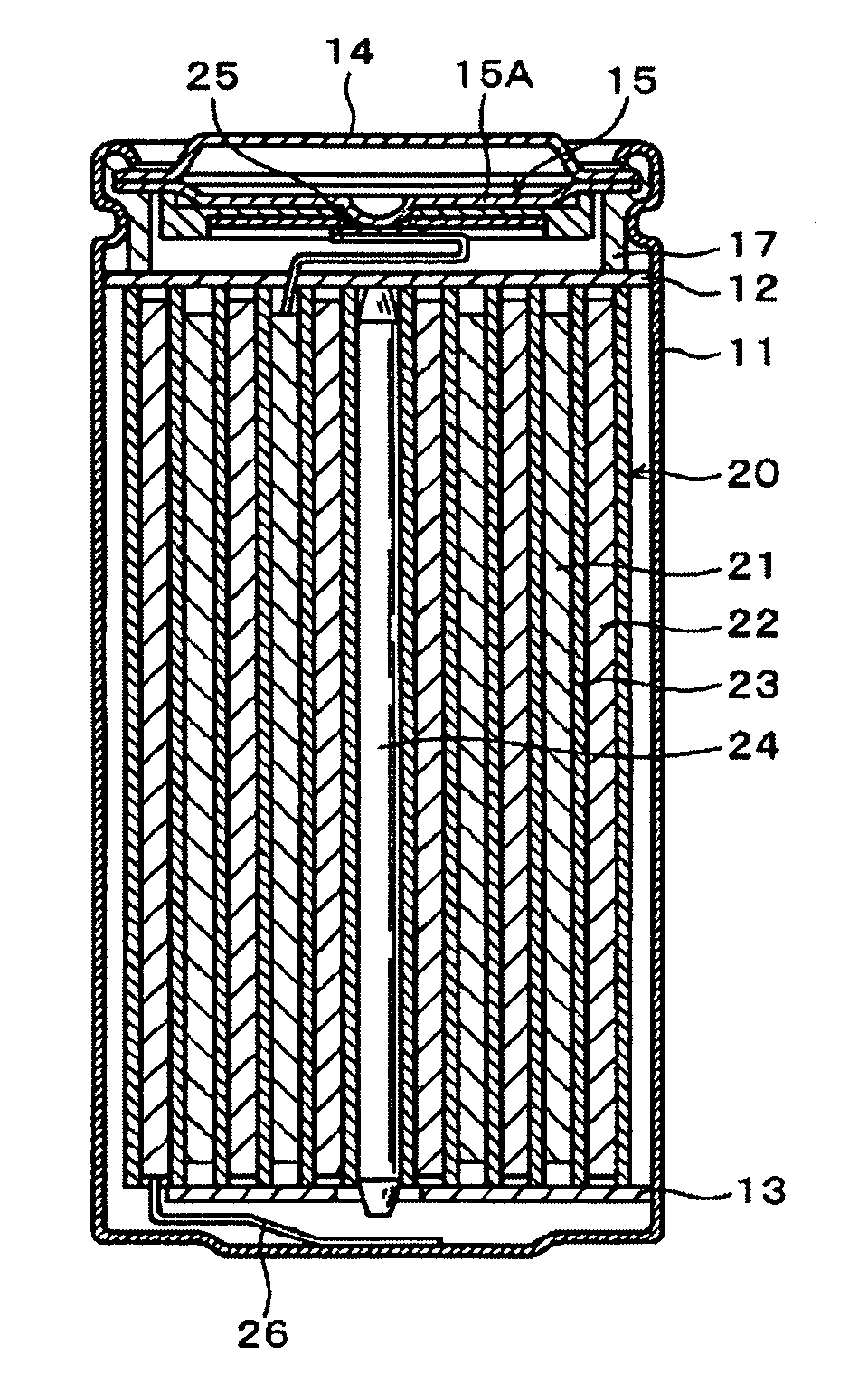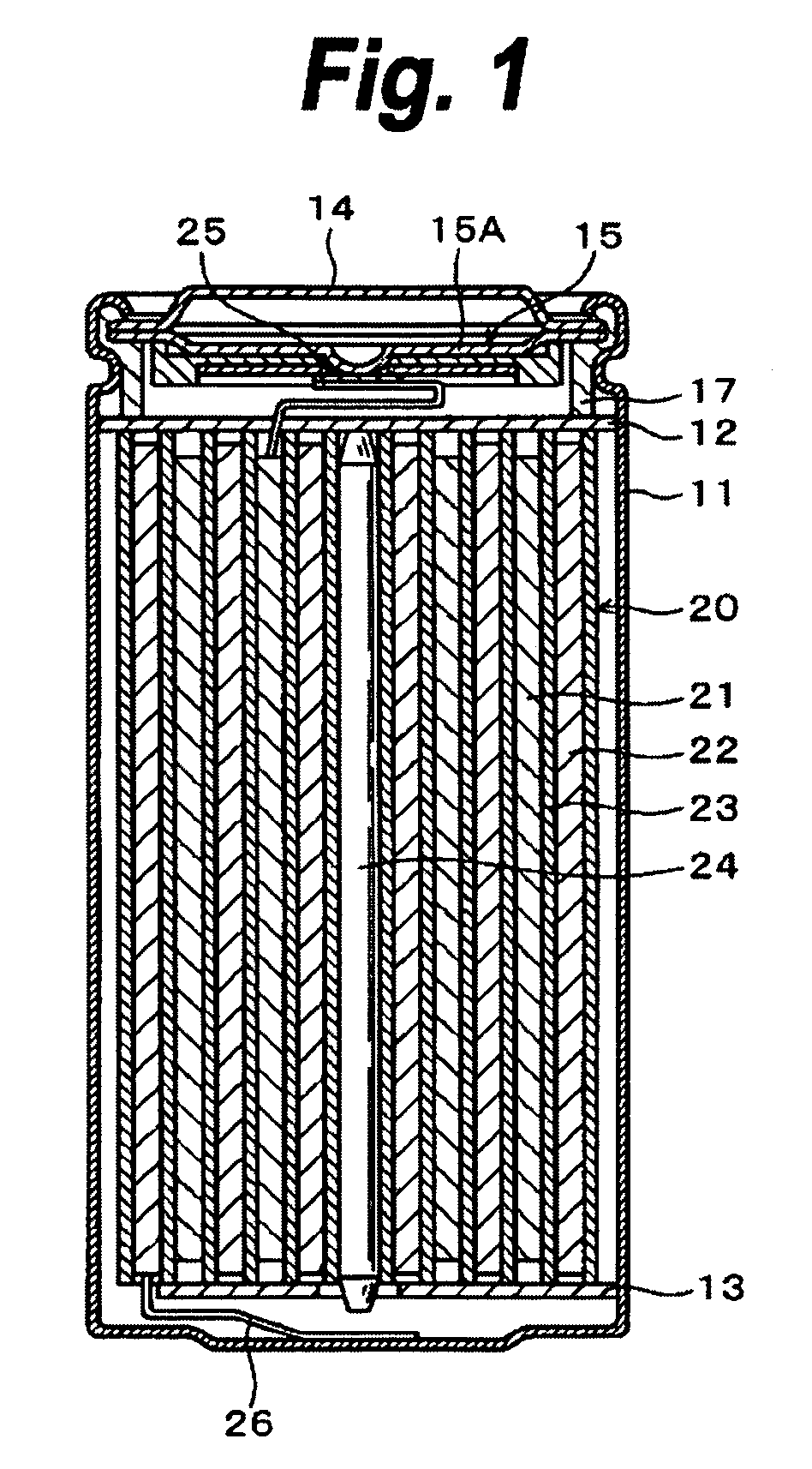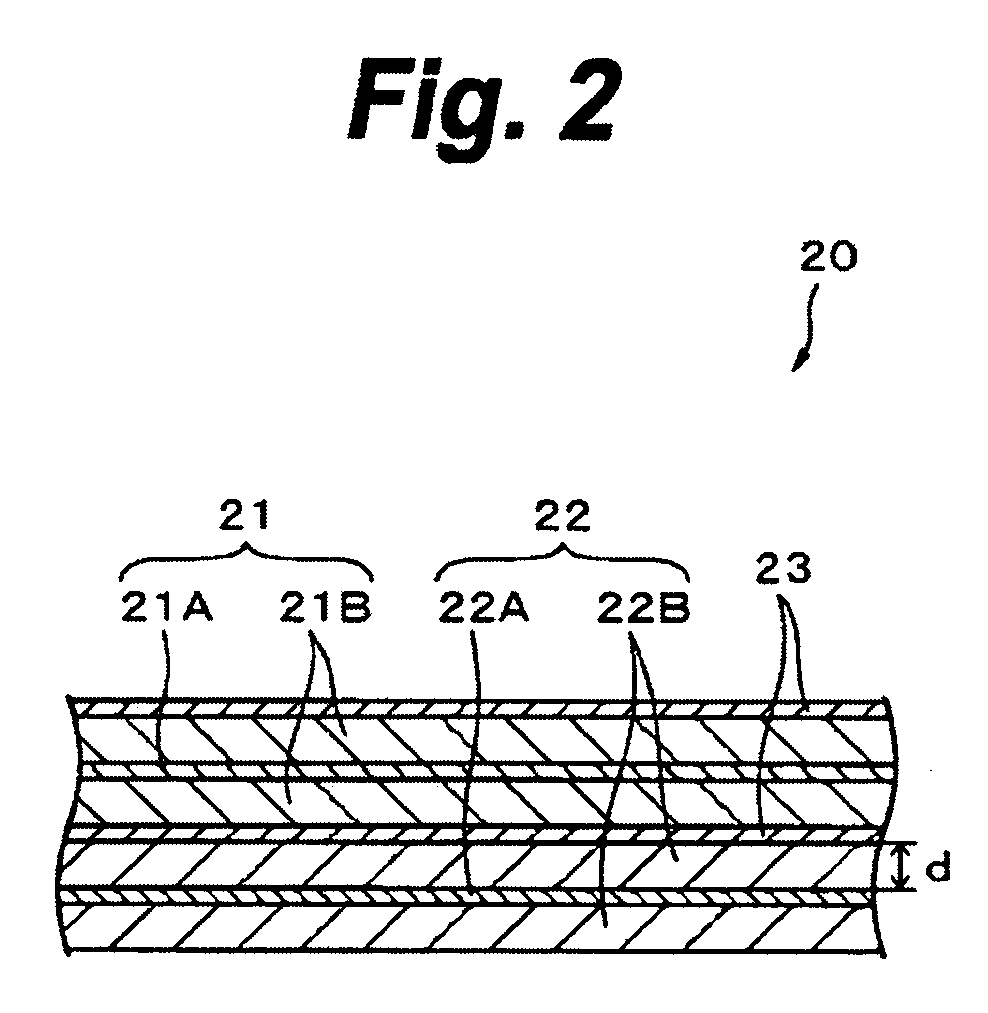Nonaqueous electrolyte secondary battery
a non-aqueous electrolyte, secondary battery technology, applied in the direction of batteries, non-aqueous electrolyte cells, sustainable manufacturing/processing, etc., can solve the problems of difficult to balance high-power characteristics and safety in lithium-ion secondary batteries in related directions, and achieve the effect of ensuring the safety of the non-aqueous electrolyte secondary battery
- Summary
- Abstract
- Description
- Claims
- Application Information
AI Technical Summary
Benefits of technology
Problems solved by technology
Method used
Image
Examples
example 1-1
[0048]The nonaqueous electrolyte secondary battery with a cylindrical shape shown in FIGS. 1 and 2 was fabricated in the following manner.
[0049]The cathode 21 was produced as follows. First, a mixture of 45% by mass of powder of LiNi0.8Co0.2AlO2 having an average particle diameter of 20 μm, 10% by mass of powder of LiNi0.34Co0.33Mn0.33O2 having an average particle diameter of 10 μm, and 45% by mass of powder of LiMn2O4 having an average particle diameter of 20 μm was used as the cathode active material. 91% by mass of the mixture, 6% by mass of artificial graphite as a conductive agent (KS-15, manufactured by LONZA Japan), and 3% by mass of polyvinylidene fluoride as a binder were mixed, which was then dispersed in N-methyl-2-pyrrolidone as a solvent, thereby obtaining a cathode mixture slurry. Subsequently, the cathode mixture slurry was uniformly applied over both faces of the cathode current collector 21A having a thickness of 20 μm and dried, which was then compression-molded, t...
example 1-2
[0054]The nonaqueous electrolyte secondary battery was produced in the same manner as described in Example 1-1 except that 40% by mass of fluoro ethylene carbonate represented by Chemical Formula (1), 5% by mass of ethylene carbonate, and 55% by mass of dimethyl carbonate were mixed and prepared, which was used as the solvent of the electrolytic solution.
example 1-3
[0055]The nonaqueous electrolyte secondary battery was produced in the same manner as described in Example 1-1 except that 60% by mass of fluoro ethylene carbonate represented by Chemical Formula (1), 5% by mass of ethylene carbonate, and 35% by mass of dimethyl carbonate were mixed and prepared, which was used as the solvent of the electrolytic solution.
PUM
| Property | Measurement | Unit |
|---|---|---|
| thickness | aaaaa | aaaaa |
| thickness | aaaaa | aaaaa |
| thickness | aaaaa | aaaaa |
Abstract
Description
Claims
Application Information
 Login to View More
Login to View More - R&D
- Intellectual Property
- Life Sciences
- Materials
- Tech Scout
- Unparalleled Data Quality
- Higher Quality Content
- 60% Fewer Hallucinations
Browse by: Latest US Patents, China's latest patents, Technical Efficacy Thesaurus, Application Domain, Technology Topic, Popular Technical Reports.
© 2025 PatSnap. All rights reserved.Legal|Privacy policy|Modern Slavery Act Transparency Statement|Sitemap|About US| Contact US: help@patsnap.com



